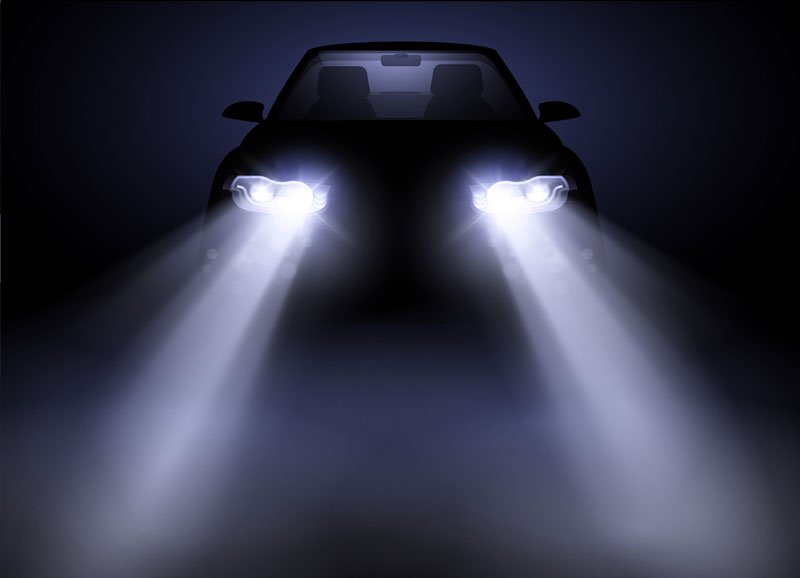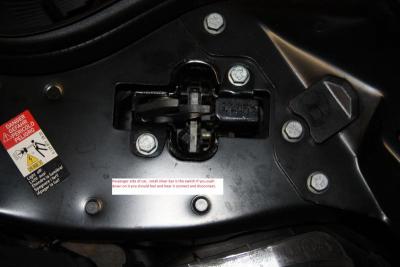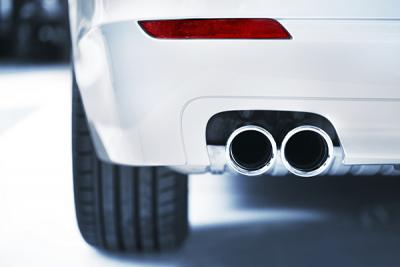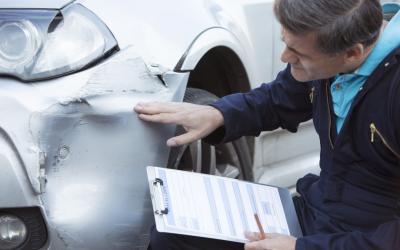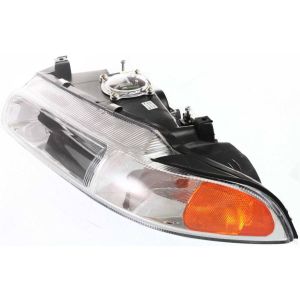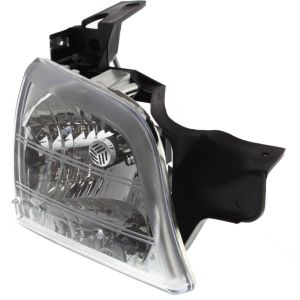Sure, you might think changing a headlight bulb is a job best left to the professionals, but it's easier than you'd expect. With a little know-how, the right tools, and some patience, you can replace that bulb yourself, saving both time and money.
Why spend your hard-earned cash on labor costs when you can do it yourself? This discussion will guide you through each step, making the process simple and straightforward. Stick around, you'll be surprised at what you're capable of.
Key Takeaways:
- Identify the issue by checking if the headlight bulb is out or if there's a fuse problem.
- Purchase the correct bulb type for your car and disconnect the power wires from the old bulb.
- Carefully install the new bulb, ensuring it's secure and correctly connected.
- If the new bulb doesn't function, check for wiring issues or compatibility problems with the plug.
Why Are Your Headlights Important?
Your car's headlights play a crucial role in ensuring your safety on the road, providing visibility during night driving and harsh weather conditions. If you've got a faulty headlight bulb, you're not just compromising your view of the road, you're also reducing other drivers' ability to see you.
The headlight bulb is housed within the headlight housing, a vital component that protects the bulb and helps project the light onto the road. This housing can become foggy or oxidized over time, diminishing the brightness of your headlights.
When your headlight bulb burns out, you might be tempted to ignore it. However, it's more than just an inconvenience. It's a serious safety issue that needs immediate attention. If your headlights aren't functioning properly, your vision is compromised, and you're less visible to other road users, especially in poor weather conditions or at night.
Likewise, a cracked headlight housing can allow moisture to seep in, causing the bulb to blow or even damaging the electrical connections inside. So, if you notice any issues with your headlights, don't wait. Replace the bulb or the housing if necessary, and keep your car's headlights in top shape to ensure your safety on the road.

Why Do Headlight Bulbs Fail?
Understanding why headlight bulbs fail can help you prevent potential issues and maintain optimal visibility on the road. One of the most common reasons for headlight failure is the natural wear and tear of the bulb's filament. This can be due to age, or the stress of extreme temperature changes.
Your bulb's filament isn't the only thing that can cause headlight failure. If your light housing gets damaged, moisture can sneak in and shorten the lifespan of your bulb. Similarly, if the headlight housing oxidizes, it can cause your lights to dim, making it harder for you to see and be seen.
Another factor to consider is the type of bulb. Halogen bulbs, for instance, are quite sensitive to moisture and even the oil on your skin. If you've recently had a bulb replacement and your headlights fail, it could be due to improper handling during the installation.
How to Change a Light Bulb in а Car Headlight?
In order to successfully change your bulb, we recommend you to follow the following tips.
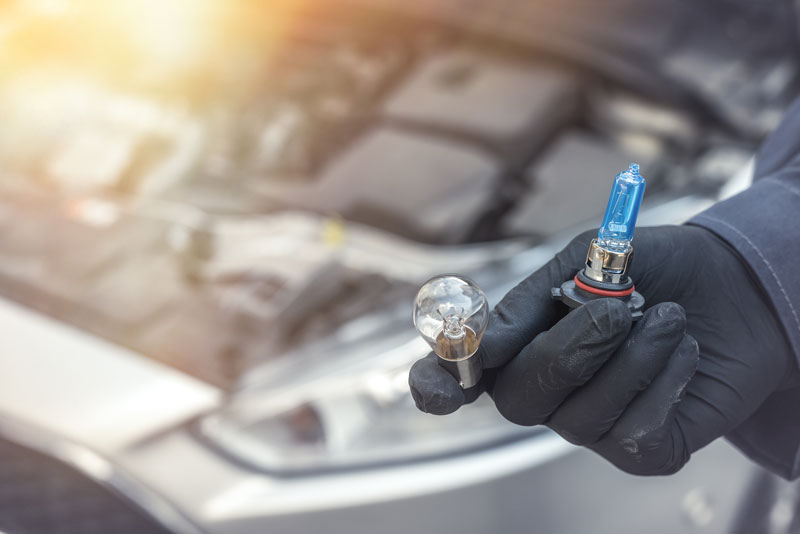
Power Your Car Down
Before diving into the headlight replacement process, make sure you've powered down your car to ensure safety. This is a crucial first step when you're preparing to replace headlight bulbs.
It's not just about turning off the engine - you should also ensure that all lights are off. Doing so will help prevent any electrical shocks or shorts that could occur while you're working.
Headlight bulbs carry a significant amount of electrical current even when they're off, so never underestimate the importance of this step.
Remember, safety is paramount when dealing with any car maintenance, including changing headlight bulbs. Once you're sure your car is completely powered down, you're ready to move on to the next step of the process: opening up the engine compartment.
Open Engine Compartment
With your car safely powered down, the next step in changing your car's headlight bulb involves opening the hood.
This may seem intimidating, but it's actually pretty straightforward:
- Firstly, locate the latch inside your car that opens the hood. It's usually near the driver's door.
- Then, lift the hood and secure it with the prop rod if it doesn't have hydraulic lifts.
- Once the hood is open, locate the headlight holder. It's usually at the front of the engine compartment.
- Look for the old bulb within the holder. Its position will guide you in changing it.
- Always remember to handle the headlight holder with care to avoid any damage.
After this, you're ready to advance to the next step: disconnecting the headlight bulb's power wires.
Disconnect the Headlight Bulb Power Wires
Now that you've located the old bulb, it's time to disconnect the power wires attached to it. These power wires supply the headlight bulb with the electricity it needs to light up. To disconnect, you'll have to find the plug at the end of the wires. This plug connects the power wires to the bulb.
Now, be cautious - don't pull on the wires themselves as this could potentially damage them. Instead, get a firm grip on the plug and pull gently. You'll feel the plug loosen and then come free.
It's a simple yet important step in the process of changing a headlight bulb. Doing this correctly ensures that no unnecessary damage is done, which could lead to bigger problems down the line.
Unscrew the Old Bulb and Install the New One
Having successfully disconnected the power wires, your next task is to carefully unscrew the old bulb from its holder. Handle it gently to avoid any damage to the headlight assembly.
Here are the steps you need to follow:
- Ensure that you do not touch the glass of the new bulb. Any oil from your hands can cause the bulb to burn out prematurely.
- Carefully align the new bulb with the base of the holder.
- Gently, but firmly, screw the new bulb into place.
- Once the new bulb is secure, reattach the power wires to the bulb.
- Test the new bulb to make sure it's working properly.
What to Do if My New Bulb Doesn't Work?
Even if you've carefully installed your new bulb, there may be instances where it doesn't work as expected. It's frustrating, but don't fret! There are troubleshooting steps you can take to pinpoint the issue.
First, double-check that you've installed the replacement bulb correctly. A loose connection can cause the bulb to fail, so ensure it's firmly secured into the entire headlight housing. If the bulb still doesn't work, you might have a faulty replacement bulb. Try installing another one to see if that resolves the issue.
Sometimes, the problem isn't the bulb at all. It could be an electrical issue, like a blown fuse or damaged wires. If both headlights are out, it's likely a fuse issue. Check your car's manual to locate the fuse box, then look for the fuse that controls the headlights. If it's blown, you'll need to replace it.
If you've gone through these troubleshooting steps and you're still in the dark, it's time to seek professional help. A mechanic can test the electrical system and diagnose any underlying issues that aren't immediately apparent. Remember, your safety should always be the priority!
How to Take Care of Your Headlights?
To keep your headlights in top shape, regular cleaning and maintenance are essential. Don't wait until you notice a problem or require a bulb replacement, actively check your headlights' condition.
Here are five simple steps to ensure proper headlight maintenance:
- Regularly check for any signs of dimming or flickering. This could be a sign that your bulb needs replacement.
- Clean your headlights frequently. Grime and dust can reduce their effectiveness.
- Use a UV-protectant on plastic lenses to prevent them from yellowing or becoming foggy.
- Check and replace your fuses as needed. A blown fuse can cause your headlights to fail.
- Handle your bulbs carefully during replacement. The oil on your skin can damage the bulb's lifespan.
Conclusion
So, there you have it! By a stroke of luck, you've learned how to change your car's headlight bulb just when you needed it the most. No more fretting over a burnt-out bulb on a dark road.
With these easy steps, you're not just saving money on mechanics, but also taking charge of your safety. Remember, well-lit roads are safe roads. So, keep your headlights bright and your journey brighter.
FAQs (Frequently Asked Questions)
What Are Some Common Symptoms of Headlight Failure?
- Common symptoms of headlight failure include one light being out, which usually means a bulb issue, or both lights out, indicating a possible fuse problem. Diminished brightness might suggest oxidation of the headlight housing.
How Often Should I Inspect My Headlights for Proper Functionality?
- Like a night-watchman checking his torch, you should inspect your car's headlights monthly. Well-functioning headlights ensure safe driving in low-light conditions and prevent unexpected, inconvenient bulb replacements. So, stay bright and stay safe on the road.
What Are Some of the Legal Implications of Driving With a Burnt-Out Headlight?
- Driving with a burnt-out headlight can lead to legal issues. You're likely to get a traffic ticket, as it's illegal in most places. It's crucial to fix this promptly to avoid fines and ensure safety.
